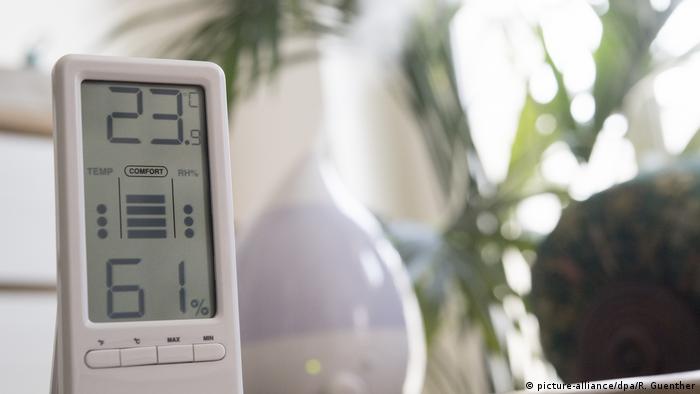You are here
Coronavirus: Humidity key to minimize virus transmission — new study
Primary tabs
 Humidity key to minimize COVID-19 transmission Dry rooms and air-conditioned indoor spaces hike Covid-viral infection, conclude Indian and German researchers in their meta-study. They're urging optimum humidity standards for building interiors and public transport. DW.COM
Humidity key to minimize COVID-19 transmission Dry rooms and air-conditioned indoor spaces hike Covid-viral infection, conclude Indian and German researchers in their meta-study. They're urging optimum humidity standards for building interiors and public transport. DW.COM Dry rooms and air-conditioned indoor spaces hike Covid-viral infection, conclude Indian and German researchers in their meta-study. They're urging optimum humidity standards for building interiors and public transport.
Relative humidity "strongly influences" the spread of viruses among people indoors, especially in dry rooms. That's the conclusion reached by an Indian-German research team which evaluated 10 mostly recent international studies.
"The role of humidity seems to be extremely important to the airborne spread of COVID-19 in indoor environments," according to the report, which was also based on findings derived from past tests with similar viruses, H1N1 for influenza and MERS-CoV.
Public buildings should have at least 40% humidity indoors, capped at 60%, to reduce viral-spread risks for occupants, said analysts led by Sumit Kumar Mishra of India's CSIR National Physical Laboratory and Alfred Wiedensohler and Ajit Ahlawat of Germany's Leibniz Institute for Tropospheric Research (TROPOS).
Read more: Dangers of COVID-19 aerosols are underestimated
Their report says humidity affects viral spread in three ways: droplet size, how viral-loaded aerosols float for "hours," and stay viral on landing surfaces.
In humid places, the viral droplet — a solution of salts, water, organics and attached viruses — grows and it falls faster, "providing less chances for other people to breathe in infectious viral droplets."
But in dry indoor air, micro-droplets shrunk by evaporation become lighter and stay adrift — an "optimal route" for viruses to be "inhaled by other residents, or finally settle on surfaces where they can survive for many days," warns the report. ...




Recent Comments